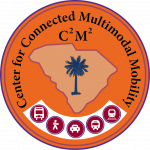In 2015, South Carolina ranked third in the nation in pedestrian fatalities per 100,000 population. Out of 979 total motor vehicle fatalities, 123 involved pedestrians, accounting for over 12% of all road user fatalities in South Carolina. While some individuals make conscious choices to walk and dwell in transit-oriented or mixed-use walkable communities, for others, vehicle availability or physical disability may dictate the pedestrian mode. Thus, pedestrian crashes and resulting deaths and injuries can disproportionately affect these segments of the population. Often, these crashes occur due to driver detection errors, such as: 1) inability to identify specific types of road users or looking at the direction that is appropriate due to the gap of cognitive expectation; and 2) failure in understanding stimuli when adequate lighting is not available or when a vehicle approaches in the periphery of the visual field for the road user. Historically, pedestrian detection has been the responsibility of the driver and is prone to errors related to expectation, visual acuity, visual contrast, etc. With the growing market of vehicle sensing, smartphones, and smart infrastructure, there exists a plethora of opportunities to aid the driver and pedestrian with enhanced sensing capability and visibility. This research lays the foundation of knowledge for pedestrian midblock crashes at nighttime, their exposure characteristics, and the potential effectiveness of existing sensing technologies. Through data analytics, this research advances knowledge for technology adoption to foster safer and more effective mobility for our society.
Assessment of Safety Benefits of Technologies to Reduce Pedestrian Crossing Fatalities at Midblock Locations Final Report
Revised_Assessment-of-Safety-Benefits-of-Technologies-to-Reduce-Pedestrian-Crossing-Fatalities-at-Midblock-Locations_FINAL_
